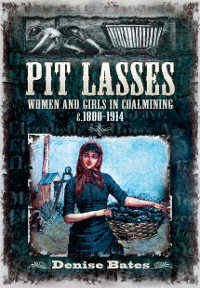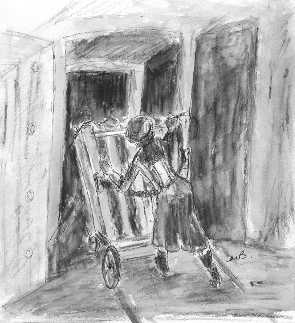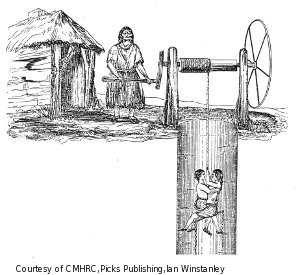
Pit Lasses
is available from
the publishers
Pit Lasses
An updated and revised edition is now available. The book contains new material that became available after the original publication date of 2011 and includes information provided by family historians about their ancestors.
In May 1842 the Children's Employment Commission broke a scandal that briefly transfixed Victorian Society. Words and pictures portrayed mining women as brazen, shameless, half-dressed hussies who could not run a home or bring up children properly. Long hours and violence against them also created outrage. To restore moral order, Parliament hastily banned female work underground.

This negative view of mining women remained unchallenged for almost 170 years, until I discovered my 4x Great Grandmother on the 1841 census. Returning to contemporary sources to discover what mining women themselves said about their lives at work and at home, I realised that the accusations against them in 1842 were based on trivial or out-of-context evidence. Compassion for women doing a job too hard for female strength motivated the Employment Commission to distort its report, knowing that only a moral scandal would convince Parliament to act.
I established that economic development was the reason why women worked underground in Yorkshire, Lancashire, Scotland and Wales, but not in other coal fields.
I discovered that there was no evidence of women working topless, except for five teenage girls who struggled to keep cool in one very hot seam, whilst working alongside their fathers and brothers.

I uncovered the demographic make-up of the female workforce in 1842, identifying who was most substantially affected by the ban on working underground.
I have demonstrated that female miners were decent, moral women who could run a home and bring up children, as well as carrying out perhaps the most exhausting work there was.
I have shown how women themselves and the coal industry adapted to the new law about where a woman could work.
I have identified the future lives of several women and girls who gave evidence to the Children's Employment Commission, and discovered the first known photograph of one of these girls.
Pit Lasses will appeal to anyone interested in the social or economic history of Victorian Britain, those interested in mining history, and family historians. I have used the lives of many of the females interviewed in 1841 to provide a valuable addition to our understanding of Victorian society and a human interest story.
See Reviews and Features for more information.
Chapters
- King Coal: Women and mining 1800 to 1830
- The Winds of Change: How mining developed in the 1830s
- Knights in Shining Armour: The work of the Children's Employment Commission
- The Unmagical Mystery Tour: The places where women worked underground
- All in a Day's Work: The jobs mining women carried out
- T'wixt a rock and a hard place? What choice did female miners have?
- Non-Domestic Goddesses: How mining women managed their homes
- Not in my Back Yard: Religion, education and health
- What not to wear: Clothes, demeanour and morality
- Publish and be Damned: The impact of the commissioners' report
- What Katy Did Next: The impact of the Mines Act
- The New Woman: Mining women above ground